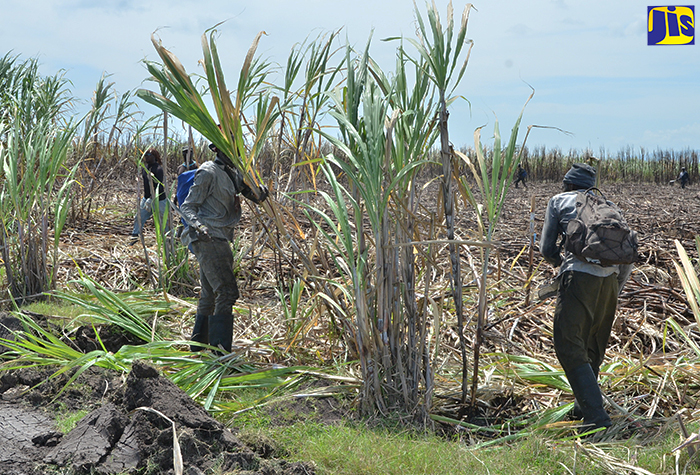Employment at All-Time High
By: , August 16, 2017The Key Point:
The Facts
- Data from the Statistical Institute of Jamaica (STATIN) show that the number of persons securing employment peaked at a historic 1,204,800 in April 2017, which was 35,800 more than the 1,169,000 persons employed in April 2016.
- STATIN data also showed that the unemployment rate fell by a further 1.5 per cent in April 2017 to 12.2 per cent relative to April 2016.
The Full Story
More Jamaicans are now employed than at any other period in the country’s history.
Data from the Statistical Institute of Jamaica (STATIN) show that the number of persons securing employment peaked at a historic 1,204,800 in April 2017, which was 35,800 more than the 1,169,000 persons employed in April 2016.
The out-turn bettered the employment level of 1,187,000 in July 2016, when the country recorded the lowest unemployment figures in five years and the highest employment level for a single month since October 2008, when 1,174,500 persons had jobs.
Senior Technical Advisor at the Planning Institute of Jamaica (PIOJ), Rochelle Whyte, spoke to the continued improvement in the labour market outcomes, at a recent forum hosted by the Ministry of Finance and the Public Service at The Knutsford Court Hotel in New Kingston.
STATIN data also showed that the unemployment rate fell by a further 1.5 per cent in April 2017 to 12.2 per cent relative to April 2016.
This translated into a reduction in the number of persons who were unemployed from 184,900 in April 2016 to 166,700 in April 2017.
These positive indications for the labour market are a significant improvement over the period October 2008 to July 2011 when more than 90 000 jobs were lost, stemming from the impact of the global economic crisis.
With respect to employment by industry, 11 of the 16 industries recorded higher levels of employment between April 2016 and April 2017.
Notable is Real Estate, Renting and Business Activities, which captures part of business process outsourcing, increasing by 9,700 to 85,600 persons.
Increases were recorded for Agriculture, Forestry and Fishing, up 6,700 to 211,500 persons; Wholesale and Retail Repair of Motor Vehicles and Equipment, up 4,500 to 230,800 persons; Transport, Storage & Communication, up 4,500 to 75,200 persons.
Of the total employed labour force, the number of males securing work moved from 659,700 to 670,400, while the number of employed females also increased from 512,400 to 534,400.
Mrs. Whyte is attributing the positive labour market trends to the ongoing implementation of economic reform measures by the Government.
She cited, among other things, business environment reforms; implementation of strategic investment projects; development of new industries; and a general improvement in Jamaica’s overall macroeconomic stability.
Mrs. Whyte said these out-turns now position Jamaica “above that pre-(financial) crisis level with respect to employment”.
She further argued that Jamaica’s economic fundamentals continue to improve consequent on ongoing implementation of economic reform measures by the Government.
In addition to the increasing employment levels, the positive economic out-turns are reflected in declining inflation that fell to a 50-year low of 1.7 per cent in 2016, bringing the figure closer to that of Jamaica’s main trading partners, such as the United States, and which the Government expects will range between four and six per cent for the 2017/18 fiscal year.
The debt to gross domestic product (GDP) ratio is also significantly lower.
Mrs. Whyte said these out-turns “augur well for our competitiveness and also protect the most vulnerable from reduced purchasing power”.
She noted that while the PIOJ forecasts medium-term growth ranging between two and three per cent, “if the Government can efficiently implement its strategic priorities and with support from the private sector, then the rate of growth can be above these baseline projections”.
Meanwhile, Principal Director for the Fiscal Monitoring Unit in the Finance Ministry, Trevor Anderson, concurred that the improved employment levels reflect ongoing improvements in the economy.
He also cited increasing net international reserves, slowed depreciation of the Jamaican dollar, accelerated growth at 1.3 per cent for the 2016/17 fiscal year, the latter of which he said “reflects the largest economic expansion since fiscal year 2007/08”.
Mr. Anderson further pointed to the positive impact of the fiscal governance policy to reducing the fiscal deficit and also the increase in the primary budgetary surplus as a percentage of GDP.
“These developments continue to positively impact business and consumer confidence, which have remained at very high levels. The Government, through prudent fiscal policy, is steadfastly committed to reducing the public debt, accelerating economic growth, and delivering a better quality of life for all Jamaicans,” he added.


